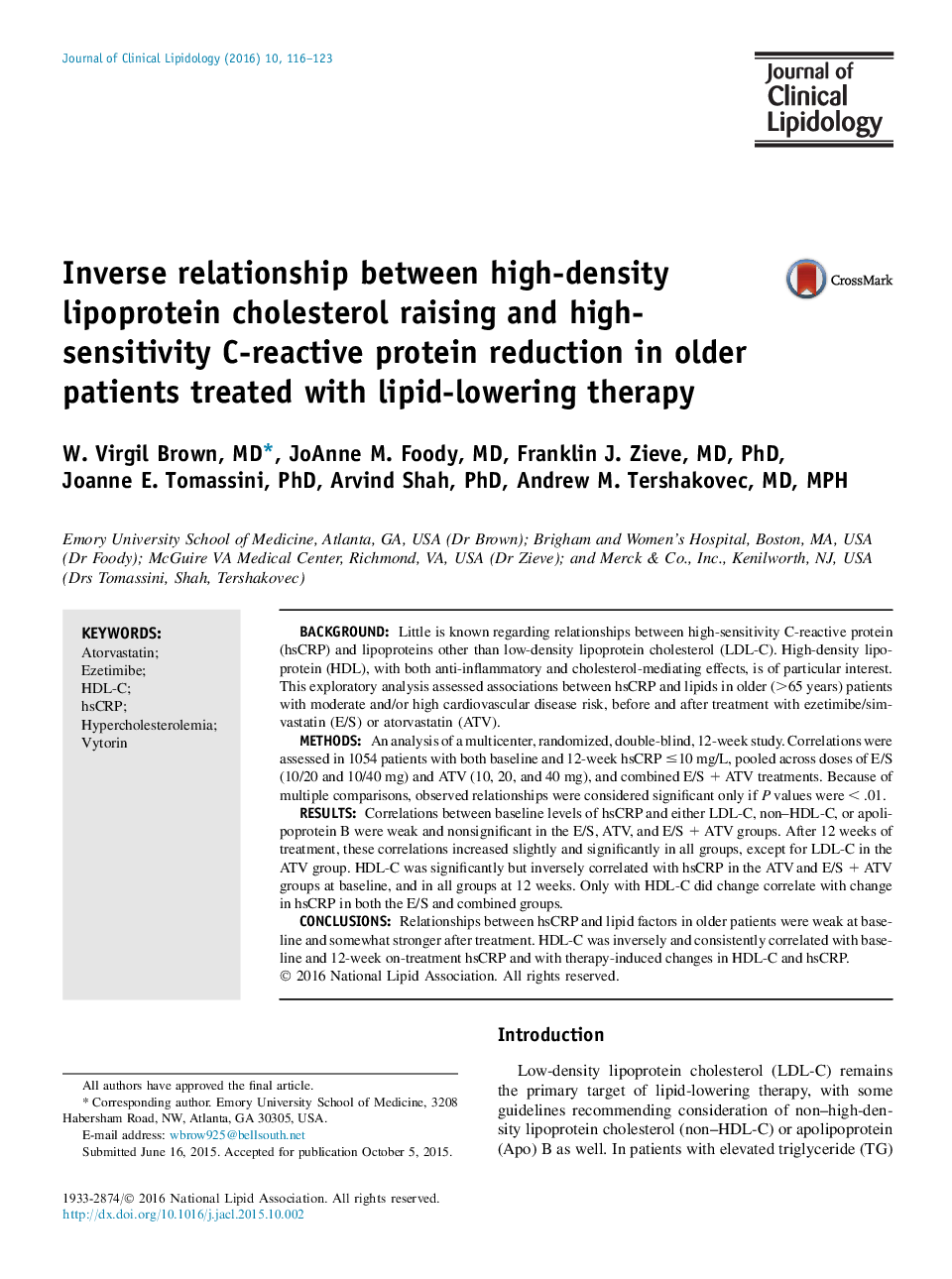| Article ID | Journal | Published Year | Pages | File Type |
|---|---|---|---|---|
| 5985184 | Journal of Clinical Lipidology | 2016 | 8 Pages |
â¢Relationships between high-sensitivity C-reactive protein (hsCRP) and lipids other than low-density lipoprotein cholesterol are not well described.â¢Older high cardiovascular risk patients were treated with ezetimibe/simvastatin or atorvastatin.â¢hsCRP and lipids correlated weakly at baseline, improving slightly on treatment.â¢Baseline and study end levels, and changes in hsCRP and high-density lipoprotein cholesterol, correlated inversely.â¢The inverse relationship of high-density lipoprotein cholesterol and hsCRP may reflect anti-inflammatory effects.
BackgroundLittle is known regarding relationships between high-sensitivity C-reactive protein (hsCRP) and lipoproteins other than low-density lipoprotein cholesterol (LDL-C). High-density lipoprotein (HDL), with both anti-inflammatory and cholesterol-mediating effects, is of particular interest. This exploratory analysis assessed associations between hsCRP and lipids in older (>65 years) patients with moderate and/or high cardiovascular disease risk, before and after treatment with ezetimibe/simvastatin (E/S) or atorvastatin (ATV).MethodsAn analysis of a multicenter, randomized, double-blind, 12-week study. Correlations were assessed in 1054 patients with both baseline and 12-week hsCRP â¤10 mg/L, pooled across doses of E/S (10/20 and 10/40 mg) and ATV (10, 20, and 40 mg), and combined E/S + ATV treatments. Because of multiple comparisons, observed relationships were considered significant only if P values were < .01.ResultsCorrelations between baseline levels of hsCRP and either LDL-C, non-HDL-C, or apolipoprotein B were weak and nonsignificant in the E/S, ATV, and E/S + ATV groups. After 12 weeks of treatment, these correlations increased slightly and significantly in all groups, except for LDL-C in the ATV group. HDL-C was significantly but inversely correlated with hsCRP in the ATV and E/S + ATV groups at baseline, and in all groups at 12 weeks. Only with HDL-C did change correlate with change in hsCRP in both the E/S and combined groups.ConclusionsRelationships between hsCRP and lipid factors in older patients were weak at baseline and somewhat stronger after treatment. HDL-C was inversely and consistently correlated with baseline and 12-week on-treatment hsCRP and with therapy-induced changes in HDL-C and hsCRP.
